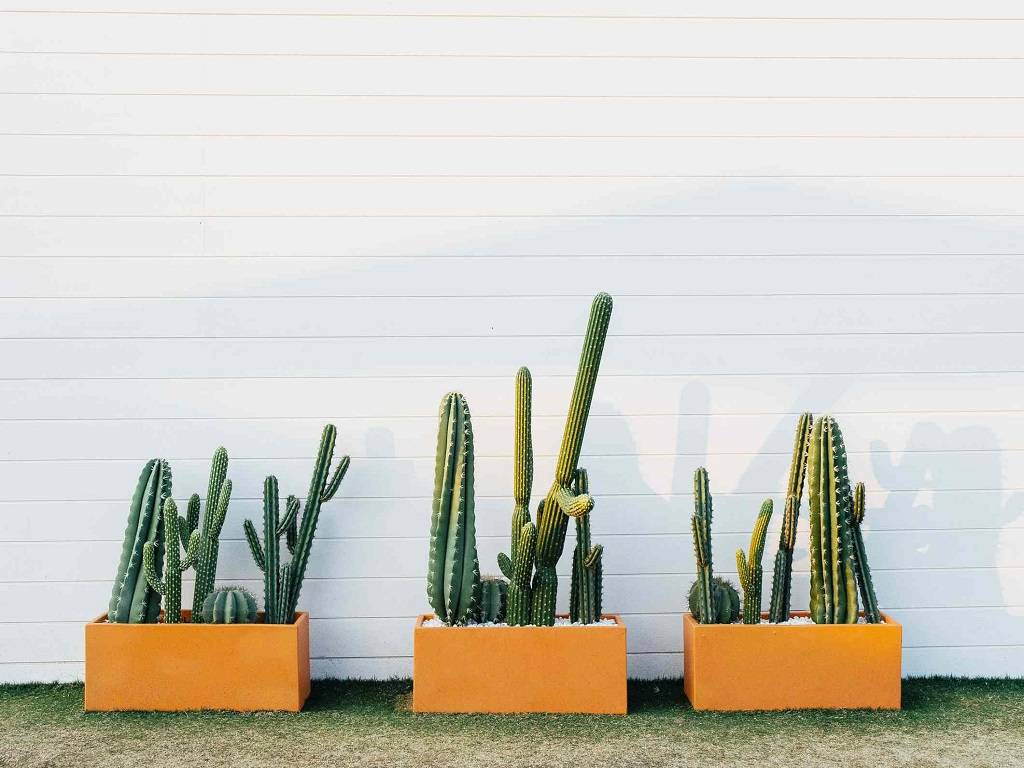
Start a cactus garden for a variety of reasons. Cactus and other succulents have an interesting and often otherworldly appearance. Are you looking for low-maintenance potted plants? Do you want to help the environment by conserving water? If that's the case, then these gardens are for you! Cactus is remarkably adaptable, and there are about as many cactus décor ideas as there are gardeners who can design them.
Easy-Care Cactus Varieties to Grow Indoors:
In nurseries and garden centers, there are hundreds, if not thousands, of cacti and other succulent varieties to choose from, with more being added every year. Many of them are appropriate for indoor gardening. Some of the most popular cactus varieties to grow in your house are listed here.
Pincushion plants (Mammillaria sp.) have a thick coating of spines that create little balls or "fingers." They have a lot of blooms that are brilliantly colored.
Hens and chicks (Sempervivum tectorum) bloom in a pattern that resembles that of a rose. Small "babies" form around the "mother" plant, hence the common name.
Sea urchin cactus (Echinopsis sp.) is a ball-shaped cactus with small, widely spread spines. They feature lovely flowers and are a good cactus for beginners.
The top colorful ball—often red—is Gymnocalycium grafted onto a green base cactus, giving the Ruby ball cactus its name (usually Hylocereus undatus). Moon cactus is a common name for this plant.
The hedgehog cactus (Echinocereus sp.) has a spreading growth style and produces bright flowers frequently.
Crown cactus (Rebutia sp.) has a thick coat of hairy thorns and grows in a cluster of tiny balls. One of the easiest cacti to cultivate indoors is this one.
Pilosocereus pachycladus is a huge, fast-growing cactus with a folded, star-like shape with fuzzy spines running along each fold's edge.
The Christmas cactus (Schlumbergera bridgessii), sometimes known as the winter cactus, is a popular holiday plant with bright flowers at the tips of its hanging branches.
Cactus Garden Ideas:
Cacti, which are a kind of succulent, tend to be quite easygoing. Cactus gardens may be planted outside or bring it inside to offer a distinctive flair to your decor.
Outdoor Cactus Landscaping Ideas: You may grow a cactus garden in your backyard if you reside in a warm winter environment. There are a variety of outdoor cactus garden ideas to choose from, including:
-
Cacti are scattered among flowering perennials and tiny bushes.
-
A desert-inspired cactus landscape surrounded by gravel or crushed stone.
-
Organ pipe cactus, blue candle cactus, and cow's tongue cactus are among the tall cacti species.
-
Large barrel cactus, blueberry cactus, and prickly pear cactus are good examples of magnificent cactus specimen plants.
Container Cactus Gardens: The beauty of a container cactus garden is that you may start one even if you live in a cold-winter climate; all you have to do is store your cacti somewhere safe during the winter. The following are some examples of cactus arrangements for outdoor containers:
-
An assortment of small cacti in a shallow terra-cotta bowl.
-
Several pots, each containing one huge cactus or succulent type.
-
Cactus hanging baskets: rattail cactus, orchid cactus, and Christmas cactus are all options.
-
A beautiful combination of annual and perennial flowers, as well as cactus plants.
Indoor Cactus Decoration Ideas: If you have a bright, sunny window, you can grow a cactus indoors.
-
A glass bowl, box, or even hanging ornament packed with tiny species of cactus and other succulents is a fascinating slice of the desert environment brought within. However, a cactus terrarium must be placed in an open container since too much humidity might cause your plants to decay.
-
Along your windowsill, display a selection of miniature cacti in similarly small yet attractive vases.
-
Grow a tall cactus beside the fireplace, at the bottom of the stairs, or in a nook near a window to draw attention to a particular area.
-
In a rustic wood or terra-cotta container, create a tiny desert garden with small cactus and desert animal miniatures.
General Cactus Care:
Cactus plant care is simple, although it isn't completely maintenance-free. Although there are exceptions to the norm, most cacti and other succulents require comparable general maintenance.
Your cactus garden, whether inside or out, needs lots of light. Each day, try to get at least six hours of direct sunlight.
It's a certain way to kill your cactus if you overwater them. Always let the soil dry completely between drinks since these drought-resistant plants are prone to root rot. It's not uncommon for cactus to just need water every few weeks throughout the winter.
If your cactus garden is outside, mother nature will take care of watering demands in the form of rain for most of the year, but if it isn't, you need properly water your plants at least once per week throughout the warmest months.
Cacti and other succulents don't need much fertilizer, but they do benefit from a light feeding during their growing season, which spans from spring to summer.
The majority of cacti are slow-growing and don't mind being a little root-bound. It's time for a new home if you observe roots pushing out of the pot or if your plant has grown out of proportion to the container size.
What's the Best Cactus Soil?
Cacti should be planted in specially formulated cactus potting soil, which can be purchased or made at home. Cactus care requires good drainage, and standard potting soil retains too much moisture for these low-water plants. On the nursery shelves, you'll find a variety of cactus soil mixes, some of which are even branded organic cactus soil, but it's simple enough to make your cactus potting soil.
One-third horticultural sand, one-third cactus compost (you can use any potting mix for this, but remove any large pieces of wood or twigs), and one-third grit in the form of pumice, perlite, or porous gravel is an excellent formula for cactus soil. Before planting your cactus, properly combine these components. If you're making a cactus terrarium, start by putting gravel in the bottom of the container and then filling it with cactus potting soil.











